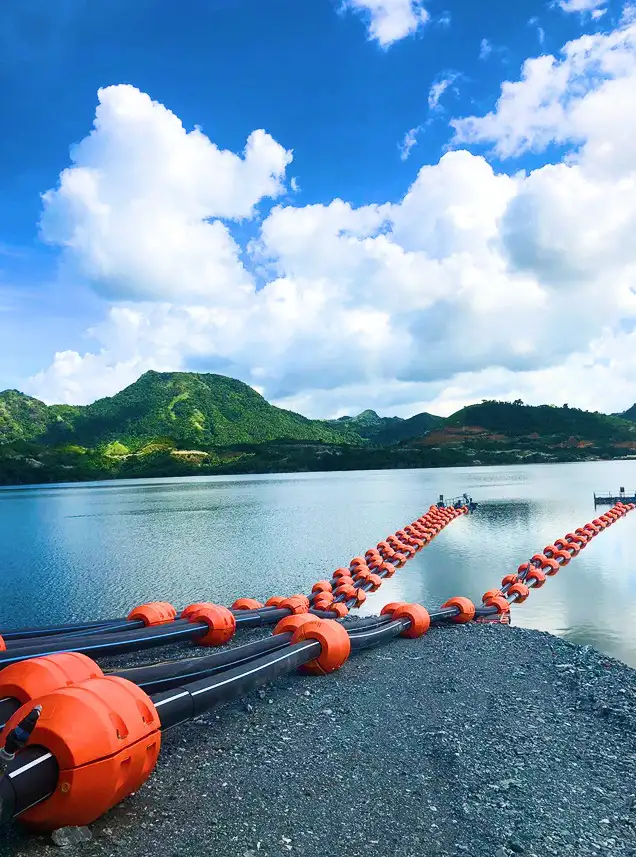Time: 2025-06-19 02:45:08 Source: Max Pipe
The extrusion process is a widely used and highly efficient method for manufacturing pipes, particularly plastic pipes. It involves melting raw materials and forcing them through a die to create a continuous profile of the desired shape, in this case, a hollow pipe.
Materials: The process typically starts with raw plastic materials in the form of pellets, granules, or powder. Common plastics used for pipes include Polyethylene (PE), Polypropylene (PP), Polyvinyl Chloride (PVC), and Acrylonitrile Butadiene Styrene (ABS), each chosen for specific applications and properties (e.g., chemical resistance, temperature handling, flexibility).
Additives: Various additives (e.g., colorants, UV inhibitors, plasticizers) may be mixed with the raw material in a hopper to enhance the pipe's characteristics.
Feeding: The prepared material is fed from a hopper into the extruder's barrel. Gravimetric or volumetric feeders are often used to ensure accurate blend ratios and consistent material supply.
Extruder Barrel: The material moves into a long, heated cylindrical chamber called the extruder barrel. The barrel is typically divided into multiple temperature zones to gradually melt the plastic without degrading it.
Rotating Screw: Inside the barrel, a continuously rotating screw (single-screw or twin-screw, depending on the material and desired output) mixes, heats, and conveys the material forward. The screw's design is crucial for proper mixing and consistent material flow. The heat is generated through a combination of external heating elements and shear (mechanical) heating from the screw's rotation.
Breaker Plate & Screen Pack: Before reaching the die, the molten polymer often passes through a breaker plate and screen pack. This acts as a filter to remove any foreign contaminants and helps to build pressure and ensure a homogeneous melt.
Die Head: The molten plastic, now a homogeneous mass, is forced through an annular die head. This die is precisely designed to give the plastic the desired pipe diameter and wall thickness. For hollow pipes, a mandrel or pin is typically positioned inside the die to create the internal cavity.
Pressure Management: The die's design ensures a smooth and stress-free flow of the molten material, minimizing potential flaws like "weld lines" where the material re-joins after flowing around the mandrel supports.
Sizing/Calibration: As the newly formed pipe exits the die, it is still hot and pliable. It immediately enters a sizing or calibration device, often a vacuum calibration tank for smooth pipes. A vacuum pulls the outer surface of the pipe against a sizing sleeve, ensuring it maintains the precise dimensions and circular shape. For corrugated pipes, pressurized air might be used to shape the corrugations.
Cooling: The pipe then passes through a series of cooling tanks, typically using chilled water baths or spray chambers. Rapid and controlled cooling is essential to solidify the plastic, maintain its structural integrity, and prevent deformation. The cooling temperature is carefully regulated (e.g., 15°C to 25°C) to avoid thermal shocks that could impact the pipe's mechanical properties.
Haul-Off Unit: A haul-off unit (or puller) continuously pulls the cooled pipe along the extrusion line at a consistent speed. This maintains a steady production rate and prevents the pipe from collapsing or deforming.
Cutting/Coiling: Finally, the pipe is either:
Cut: For rigid pipes or specific lengths, a cutting unit (e.g., saw or guillotine) cuts the pipe into desired segments. The cutting process is synchronized with the extrusion line.
Coiled: For flexible pipes, a coiling machine winds the continuous pipe into coils for easier transport and storage.
High Volume Production: It's a continuous process, allowing for high output rates and mass production.
Cost-Effective: The efficiency of the process and ability to reuse waste material (thermoplastics can be melted and re-processed) contribute to lower production costs.
Design Versatility: Extrusion can produce a wide range of pipe sizes, wall thicknesses, and even multi-layer pipes. Custom dies allow for various cross-sectional profiles.
Material Flexibility: A variety of thermoplastic materials can be used, each offering different properties suited for specific applications.
Consistent Product Quality: The continuous nature and controlled parameters lead to uniform and consistent product quality.
The extrusion process is fundamental to various industries, including construction (plumbing, drainage), agriculture (irrigation), telecommunications (cable conduits), and more, due to its ability to produce durable, consistent, and cost-effective piping solutions.
